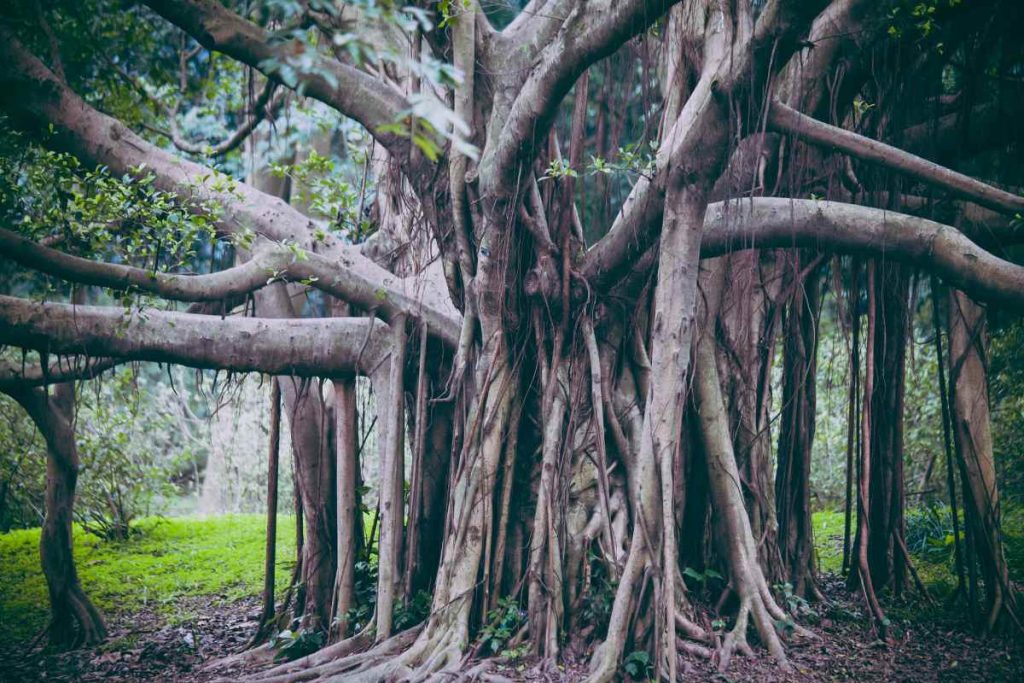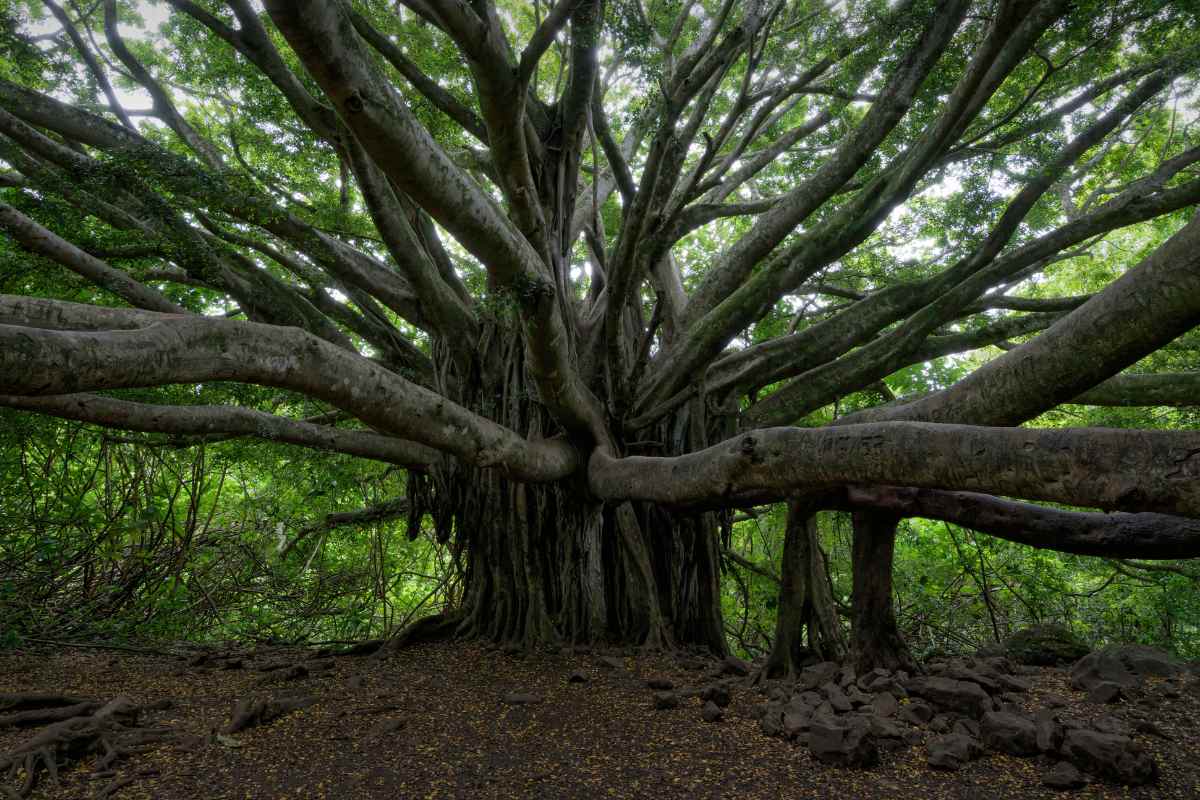Journeying through Centuries with the Oldest Banyan Trees
Banyan trees are majestic and awe-inspiring giants that have captivated the human imagination for centuries. These ancient trees hold a significant place in various cultures and religions around the world. With their sprawling branches and intricate root systems, banyan trees have become symbols of strength, resilience, and longevity.
In this article, we will delve into the fascinating history and secrets of banyan trees, exploring their origins, cultural significance, and ecological importance. Join us on a journey through time as we uncover the mysteries of these magnificent trees.
The Fascinating History of Banyan Trees: A Glimpse into the Past
The history of banyan trees dates back to ancient civilizations, where they were revered for their unique characteristics and believed to possess mystical powers. Originating in India, banyan trees were mentioned in ancient texts such as the Mahabharata and the Ramayana. They were considered sacred and often associated with deities and spiritual practices.
As civilizations expanded and trade routes were established, banyan trees spread across different continents. They were introduced to Southeast Asia, Africa, and the Americas, where they adapted to various climates and thrived in diverse ecosystems. Today, banyan trees can be found in countries such as Thailand, Sri Lanka, Brazil, and the United States.
Ancient Wisdom: Unearthing the Secrets of the Oldest Banyan Trees

Some of the oldest banyan trees in the world can be found in India, where they have stood for centuries as silent witnesses to history. These ancient trees have survived wars, natural disasters, and human encroachment, showcasing their resilience and longevity.
Scientific research and studies have shed light on the secrets behind the longevity of banyan trees. It has been discovered that their unique root system allows them to adapt to changing environments and withstand harsh conditions. The aerial roots of banyan trees grow downwards from the branches and eventually reach the ground, forming new trunks and creating a complex network of interconnected trees.
Guardians of Time: Exploring the Lifespan of Banyan Trees
Banyan trees have an incredibly long lifespan, with some specimens living for hundreds of years. The factors that contribute to their longevity include their ability to regenerate and adapt to different environments, as well as their resistance to diseases and pests.
One example of a banyan tree that has stood the test of time is the Great Banyan Tree in Kolkata, India. This massive tree is estimated to be over 250 years old and covers an area of about 14,500 square meters. It is considered one of the largest banyan trees in the world and continues to thrive despite its age.
Majestic Giants: Discovering the Enormous Size of Banyan Trees

Banyan trees are known for their impressive size and structure, making them true giants of the plant kingdom. Their branches can spread out over a wide area, creating a canopy that provides shade and shelter for various species.
Compared to other tree species, banyan trees are unique in their ability to grow new trunks from their aerial roots. This process allows them to expand horizontally and create a labyrinthine network of interconnected trees. The largest banyan tree in the world is located in Howrah, India, and covers an area of about 18,918 square meters.
Sacred Shrines: How Banyan Trees Became Symbols of Worship
Throughout history, banyan trees have been considered sacred in many cultures and religions. They are often associated with deities and spiritual practices, and are believed to possess divine powers.
In Hinduism, banyan trees are considered sacred because they are believed to be the abode of Lord Krishna. It is said that Lord Krishna revealed his divine form to his devotees under a banyan tree. Similarly, in Buddhism, banyan trees are revered as the tree of enlightenment, as it is believed that Buddha attained enlightenment while meditating under a banyan tree.
Banyan Trees and Cultural Significance: An Insight into Local Traditions
Banyan trees hold immense cultural significance in different regions around the world. They are often associated with stories, myths, and legends that have been passed down through generations.
In Thailand, banyan trees are believed to be inhabited by spirits and are considered sacred. It is common to see small shrines or altars dedicated to these spirits at the base of banyan trees. In Sri Lanka, banyan trees are associated with fertility and are often found near temples and sacred sites.
The influence of banyan trees can also be seen in art, literature, and architecture. Many artists and writers have been inspired by the beauty and symbolism of these ancient trees, incorporating them into their works. In architecture, banyan trees have been used as a design element in temples, palaces, and gardens, adding a touch of natural grandeur to man-made structures.
The Banyan Tree’s Role in Ecological Balance: Sustaining Ecosystems for Centuries

Banyan trees play a crucial role in maintaining ecological balance and sustaining ecosystems. Their sprawling branches provide shade and shelter for various species of birds, insects, and mammals. The aerial roots of banyan trees also serve as habitats for epiphytic plants, creating a microcosm of life within their intricate root systems.
In addition to providing habitat and food for other species, banyan trees also contribute to soil fertility and water conservation. Their fallen leaves decompose and enrich the soil with nutrients, while their extensive root systems help prevent soil erosion and retain water.
Banyan Trees Around the World: A Global Journey through Ancient Landscapes
Banyan trees can be found in different countries around the world, each with its own unique characteristics and adaptations. In India, the country of their origin, banyan trees are deeply ingrained in the cultural and religious fabric of society. They can be found in temples, parks, and along roadsides, providing shade and beauty to the landscape.
In Southeast Asia, banyan trees are revered for their spiritual significance and are often associated with ancient temples and sacred sites. In Thailand, the famous Wat Mahathat temple in Ayutthaya is known for its iconic Buddha head engulfed by the roots of a banyan tree.
In the Americas, banyan trees have adapted to tropical and subtropical climates. In Florida, the city of Miami is home to the iconic Banyan Tree Park, where visitors can marvel at the beauty and grandeur of these ancient trees.
Conservation Efforts: Preserving the Legacy of Oldest Banyan Trees
Despite their resilience, banyan trees face numerous threats that endanger their survival. Deforestation, urbanization, and climate change are some of the major challenges that these ancient trees face.
Efforts are being made to protect and conserve banyan trees and their habitats. Conservation organizations and local communities are working together to raise awareness about the importance of these trees and promote sustainable practices. Initiatives such as tree planting campaigns, habitat restoration projects, and educational programs are helping to preserve the legacy of the oldest banyan trees for future generations.
The Enduring Beauty of Banyan Trees: Inspiring Awe and Wonder in the Modern World
In a world that is constantly changing and evolving, banyan trees stand as timeless reminders of nature’s beauty and resilience. Their majestic presence and intricate root systems inspire awe and wonder, reminding us of the interconnectedness of all living beings.
As we continue to explore and appreciate the secrets and significance of banyan trees, let us also remember our responsibility to protect and conserve these ancient treasures. By preserving their habitats and raising awareness about their importance, we can ensure that future generations will have the opportunity to marvel at the enduring beauty of banyan trees.
More Sources: The Fascinating Story of the Oldest Crowhurst Yew Tree


Pingback: How Sunland Big Baobab Trees Inspire Conservation Efforts - Lakeofcode